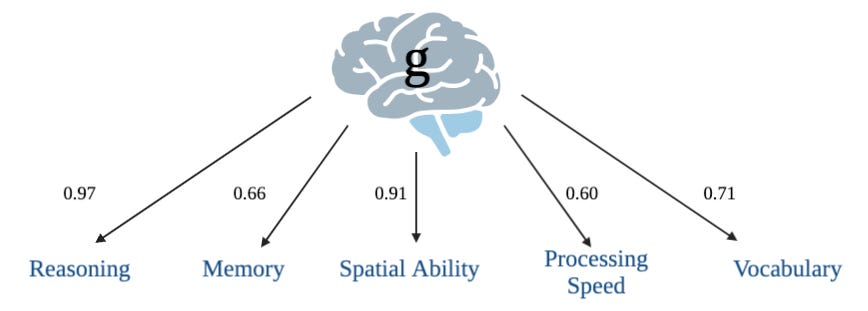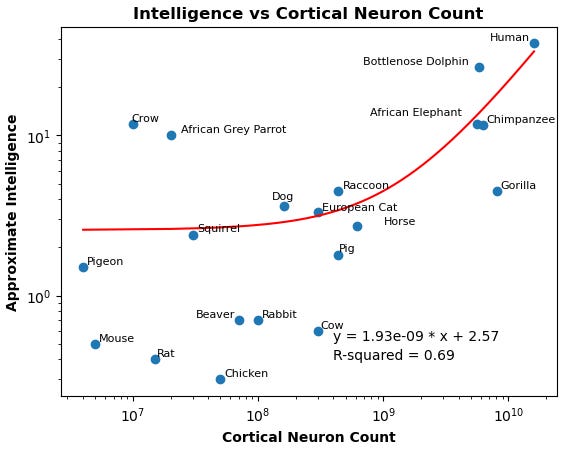III. Understanding Human Intelligence
Mitigating the Existential Risk of AI: Interventions to Enhance Human Intelligence
Table of Contents:
I. Overview and Introduction | II. The Inevitability and Existential Risk of Artificial General Intelligence | III. Understanding Human Intelligence | IV. Reaching vs. Expanding Biological Potential | Biological Strategies to Expand Human Intelligence: Neurotransmitter Modulation | VI. Biological Strategies to Expand Human Intelligence: Neurotrophins | VII. From Neurons to AI: The Surprising Symmetry of Emergence | VIII. Biological Strategies to expand Human Intelligence: Neurogenesis
Human intelligence does not have a strict definition and is a highly controversial topic. One definition that has been agreed upon by 52 prominent intelligence researchers is quoted below:
“Intelligence is a very general capability, among other things, involves the ability to reason, plan, solve problems, think abstractly, comprehend complex ideas, learn quickly and learn from experience. It is not merely book learning, a narrow academic skill, or test-taking smarts. Rather, it reflects a broader and deeper capability for comprehending surroundings - ‘catching on’, ‘making sense’ of things, or ‘figuring out’ what to do. Intelligence, so defined, can be measured, and intelligence tests measure it well.
My distillation of this is that intelligence can be thought of as the general cognitive ability for reasoning, problem-solving, and learning across a wide set of domains; this is often referred to in the intelligence community as ‘g factor’. It is a multifaceted construct that encompasses a wide range of cognitive abilities, including memory, attention, language understanding, and decision-making, to name a few (Figure 1). In the context of our increasingly digital and interconnected world, intelligence is our key asset in tackling diverse problems and navigating complex information landscapes.

Biologically, intelligence is the result of intricate and dynamic interactions within our brain, the most complex organ in the human body. At the core of these interactions are neurons, the fundamental units of the brain, which process and transmit information through electrical and chemical signals. The human cortex, the brain's outer layer associated with higher cognitive functions, contains approximately 16 billion neurons. Each neuron forms thousands of connections, called synapses, with other neurons, creating an incredibly complex network of communication pathways.
Two key characteristics of this neural network, namely the number of cortical neurons and the number of connections between these neurons, play pivotal roles in cognitive function. The number of cortical neurons can influence the brain's processing capabilities, while the number of connections between these neurons, which is largely determined by synaptic plasticity, can affect the efficiency and flexibility of information processing. While the effects of neuron synapse number and total neurons are still being understood, there is a clear correlation between cortical neuron count and approximate intelligence.
Cortical neuron counts are well characterized in a variety of animals along with some basic approximations for intelligence. To better understand the correlation between cortical neuron count and intelligent behavior some of this data is compiled below (Table 1). The intelligence of animals was approximated with ‘Encephalization Quotient’ (EQ) and ‘Cognitive Test Score’ (CTS). These data were used to produce an ‘Approximate Intelligence’ by converting CTS scores to numerical values (low=1, mid=3, and high =5) and multiplied by EQ. ‘Approximate Intelligence’ was plotted against cortical neuron count. Unsurprisingly there is a strong correlation between cortical neuron count and approximate intelligence (Figure 2 and Figure 3). Interestingly, there are some animals that significantly punch above their weight class in terms of intelligence vs cortical neuron count, particularly the birds in the survey. This is further evidence of the importance beyond raw ‘cortical neuron number’ on intelligence, potentially implicating the organization of these neuron structures and the equality of these neurons.


Another crucial factor influencing cognitive function is the myelination of neurons. Myelination is the process by which certain types of cells, called oligodendrocytes, produce a fatty substance known as myelin that wraps around the axons of neurons. This myelin sheath serves as an insulator and improves the speed and efficiency of electrical signal transmission between neurons. Enhanced myelination can lead to faster processing speeds and improved integration of information, contributing to higher cognitive abilities.
Understanding these biological underpinnings of human intelligence provides the groundwork for devising strategies to enhance our cognitive capabilities. However, traditional approaches aimed at improving lifestyle factors like nutrition, physical exercise, and sleep hygiene primarily help individuals to reach their native biological potential. As AI capabilities continue to expand rapidly, it becomes imperative that we explore interventions that push beyond these native boundaries and substantially elevate human cognitive potential. In the following sections, we delve into such biological strategies that offer the promise of expanding human intelligence.
A fundamental shift in our approach to enhancing human cognitive abilities is imperative as we grapple with the realities of a rapidly advancing AI landscape. Traditionally, the focus has been on strategies that enable individuals to reach their native biological potential. However, the growing potential of AI necessitates a move beyond these innate boundaries, pushing us to explore biological interventions capable of expanding our cognitive potential.






Making a follow up on the bell curve distribution of IQ between men and women would make a great follow up. You could also make predictions based on how intellectual expansion would effect each gender and how we may socialize differently in the future because of it!